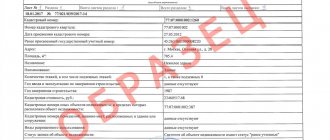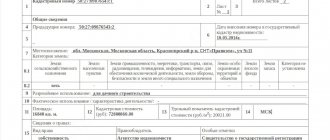Shared ownership: features of the relationship between co-owners
In Russian legislation there are two definitions of property – common and shared.
Joint ownership means the fact of simultaneous ownership of one property by several persons. This can happen for many reasons, for example, if several people buy one apartment together or they inherit living space. Property can be divided not only between relatives and spouses, but also between persons who are not related by family ties.
Shared ownership means this type of common property (apartment, house, room), in which the shares of all co-owners are clearly distributed (Article 209 of the Civil Code).
In a situation where the co-owners are unable, for whatever reason, to agree on the rules and establish a compromise procedure for owning and managing the joint living space, they can exercise the right to liquidate their legal relations on the principle of joint ownership.
The procedure for transferring property from the category of joint ownership to shared ownership can only be carried out by a court decision (Article 27 of the Civil Code). The agreement must be drawn up in the form of a notarial deed.
Relations between the co-owners of an apartment regarding the procedure for use are built on the principle of their participation in its value/profitability/unprofitability (Article 245 of the Civil Code). Unlike relations in the ownership and management of joint property, shared relations are regulated by law.
When several people share an apartment, therefore the order of use, the ratio of joint ownership or management of the property, this can cause many problems. After all, the order of relations between shared residential property, in contrast to commercial property, depends on the influence of many factors - material and emotional-psychological.
Therefore, it is often extremely difficult to reach a compromise regarding the procedure for using common shared living space. The comfort of living together may be disrupted, for example, due to the decision of one of several co-owners to sell/rent one of the rooms to an outsider.
The way out of the situation is an application for the abolition of joint ownership of the apartment, i.e. a severance of relations in which all co-owners have equal rights to use shared real estate.
There are two ways to do this. The first is to sign the appropriate written agreement with the notary. The second is to request a court decision to determine the procedure for using shared living space.
Types of common joint property
The Civil Code of the Russian Federation provides for two types of common joint property:
- common joint property of the spouses;
- common joint property of a peasant (farm) enterprise.
Previously, existing legislation also provided for the emergence of common joint ownership of privatized residential premises.
1) common property of the spouses , which consists of property acquired by the spouses during the marriage, unless a different legal regime is established by the marriage contract (clause 1 of Article 256 of the Civil Code of the Russian Federation).
The concept of property related to the joint ownership of spouses includes all income received by spouses from labor and business activities, pensions, benefits and other payments, securities and income from them, property acquired with these funds.
Article 34 of the Family Code of the Russian Federation provides a more complete, but not exhaustive list of property that is the joint property of spouses. In particular, it also includes rights to shares in capital, deposits, shares contributed to commercial organizations or credit institutions. At the same time, regardless of which spouse’s name the items acquired from the spouses’ common income were registered in, or whether funds were deposited in the name of which spouse, these items and funds are recognized as the common property of the spouses.
The basis for the emergence of a legal regime of common joint property among spouses is the legal fact of marriage between them.
The following cannot be included in jointly acquired property:
- property that belonged to each spouse before marriage;
- property received during marriage as a gift or by inheritance;
- personal items (clothing, shoes, etc.), with the exception of jewelry and other luxury items;
- the exclusive right to the result of intellectual activity belonging to the author of such a result (excluding income received from the use of such a result, unless otherwise provided by an agreement between spouses).
The property of each spouse may be recognized as their joint property if it is established that during the marriage, investments were made from the common property of the spouses or the personal property of the other spouse that significantly increased the value of this property (major repairs, reconstruction, re-equipment, etc. );
2) property of a peasant (farm) enterprise , which includes all the property of the members of the peasant enterprise, acquired with common funds: a plot of land granted to this farm or acquired; outbuildings and other buildings; reclamation and other structures; productive and working livestock, poultry; agricultural and other machinery and equipment; vehicles, equipment and other property; fruits, products and income, as well as fruits, products and income received as a result of the activities of the farm.
Peasant (farm) economy - an association of citizens related by kinship and (or) property, having property in common ownership and jointly carrying out production and other economic activities (production, processing, storage, transportation and sale of agricultural products), based on their personal participation ( Article 1 of Federal Law No. 74-FZ “On Peasant (Farm) Farming”).
The regime of joint ownership of members of a peasant farm is formed at the time of its registration (unless the members of the farm agree to establish a regime of common shared ownership).
Joint ownership of members of a peasant farm includes property contributed by its participants when creating the farm, either provided for its ownership, or acquired for it at the expense of the common funds of the participants in the farm, as well as income, fruits and products received in the process of its activities (Article 257 Civil Code of the Russian Federation). The latter are used by agreement of all co-owners (clause 3 of Article 257 of the Civil Code of the Russian Federation), who, in particular, can decide to establish the amount and pay personal income to members of the peasant farm.
3) common ownership of privatized residential premises . According to Art. 2 of the Law on the Privatization of Housing Stock, family members were given the opportunity to purchase state or municipal residential premises occupied by them under a lease or lease agreement into joint or shared ownership. This rule allowed for the possibility of all family members, regardless of their subject composition, having common joint ownership of privatized housing. Federal Law No. 54-FZ of May 15, 2001 clarified the corresponding norm. Nevertheless, at present it is still possible for the existence of common joint property of persons who previously privatized their living quarters and who were not spouses or members of a peasant household.
Rights and obligations of participants in shared ownership
Co-owners have the right to perform such actions as:
- disposition - the shareholder has the right to sell, donate, lease his share in the apartment legally without the consent of the other shareholders (with prior written notice);
- use of shared living space - if this is not possible, the shareholder has the right to claim the due compensation;
- owning an apartment - receiving income from renting out living space in the manner prescribed by the Civil Code.
Shareholders are obliged (in proportion to the share):
- pay taxes and other payments for a joint apartment (their procedure is established in the signed joint agreement);
- pay the costs of maintaining it in proper condition.
The shared ownership regime for an apartment gives rise to a number of rights, procedures, rules of use and obligations for its co-owners (shareholders). This applies in particular to the management of shared living space. Co-owners need to become familiar with the rules for using the apartment or rooms in order to avoid unnecessary conflicts in the future and know how to resolve them.
The most general rule provided for in the provisions on the rights and obligations of shareholders-co-owners (Article 247 of the Civil Code) is that each of them has the right to joint ownership and use of common living space to the extent that the rights of the remaining shareholders are not violated. And in the absence of signing an agreement on a voluntary basis for the joint use of a common apartment - in court.
Housing legislation establishes a presumption that the shares of co-owners are equal (with some exceptions). Each of the co-owners has the right to dispose of their part of the apartment without obtaining the consent of the other shareholders in compliance with the accepted procedure for the use of common living space.
This principle allows you to freely regulate the relationship between real estate shareholders, but in such a way that the rights of any of the co-owners are not violated.
According to the norms of the established procedure, the shareholder has the right to receive income from the living space, and at the same time is obliged to bear the costs of maintaining the apartment in use, in proportion to the size of his share. For example, each co-owner of shared housing is required to cover the costs of repairs and maintenance.
Residents in a communal apartment have the right to use common premises according to the rules (for example, kitchen, bathroom, bathroom). Co-owners can, regardless of the principle set out above, enter into an agreement that regulates each of them’s share of expenses and even exempts some of the co-owners from them.
If one of the co-owners does not cover the costs of maintaining an apartment or room in common use, and the other co-owners are responsible for paying for them, according to the law, they can demand reimbursement of expenses in proportion to the share of the evading person. They may even file a lawsuit against him.
Co-owners of an apartment can enter into a subcontract agreement with third parties. However, in situations where disagreement arises on the part of the majority of shareholders, each of them has the right to go to court to resolve a dispute about determining the procedure for using shared living space.
In the case of shared living space, each co-owner has the right to freely dispose of their shared part of the living space. In accordance with the rules of procedure established by the Civil Code, he should not obtain the consent of the remaining shareholders, except in the case of leasing his premises.
Each of the co-owners can dispose of their share at their own discretion, and, for example, sell it. The legal procedure allows bailiffs to carry out a sale during enforcement proceedings to cover the debts of the owner of this share. Persons who purchased it can move into the premises.
What to refer to in court?
So, to begin with, we have to determine a list of circumstances (facts about the apartment and your life in it) that will be important to the court.
Unfortunately, it is extremely rare that ready-made lists of such circumstances are enshrined in the law (although this would make life much easier for lawyers). This is impossible due to the individuality of each specific case, its uniqueness.
In particular, with regard to disputes of the category that interests us, the Constitutional Court of the Russian Federation itself spoke on this matter, pointing out that the variety of circumstances influencing the determination of the procedure for using common property makes it impossible to establish an exhaustive list of them in the law (clause 2 of the Determination of the Constitutional Court of the Russian Federation dated November 20, 2008 N 831-О-О).
This was bad news, but don't be too quick to be sad. The next one is good. Judicial practice in such cases is often formed on the basis of the opinion of the Plenum of the Supreme Court of the Russian Federation, and in our case it expressed its opinion. Be careful, what follows is another boring quote.
In accordance with paragraph 37 of the resolution of the Plenum of the Supreme Court of the Russian Federation No. 6, the Plenum of the Supreme Arbitration Court of the Russian Federation No. 8 dated July 1, 1996, the impossibility of dividing property in shared ownership in kind or separating a share from it does not exclude the right of a participant in common shared ownership to file a claim for determination the procedure for using this property, if this procedure is not established by agreement of the parties. In resolving such a requirement, the court takes into account the actual procedure for using the property, which may not exactly correspond to the shares in the right of common ownership, the need of each of the co-owners for this property and the real possibility of joint use.
Let's decipher it. When considering such cases, courts take into account the following.
1) The size of shares of co-owners.
Firstly , it’s worth assessing whether your share in the apartment is significant in relation to the shares of other owners.
For what? If the share is insignificant, the court may not only refuse the claim to determine the order of use, but also satisfy the defendant’s counterclaim to force the purchase of your share due to its insignificance. Then you will lose your share in the apartment and receive compensation. Thus, in one case, the court granted a counterclaim for the purchase by the owner of 6/7 of the plaintiff’s 1/7 share in the apartment (appeal ruling of the Moscow City Court dated January 12, 2018 in case No. 33-0869).
By the way, if you are interested in the issue of forced buyout of a share, then this topic has already been broken down into molecules in our article .
Secondly , think about the ratio of your share in size to the actual isolated rooms in the apartment. At the same time, it is not at all necessary that the apartment have a room that ideally matches your share. Judicial practice allows deviations both upward and downward, but without significant excess (appeal ruling of the Moscow City Court dated April 4, 2021 in case No. 33-10332; ruling of the Supreme Court of the Russian Federation dated January 17, 2017 No. 117-KG16-10 , Ruling of the Supreme Court of the Russian Federation dated April 26, 2016 No. 25-KG16-2, appeal ruling of the Moscow City Court dated April 26, 2021 in case No. 33-15828).
You probably have a logical question: what excess will be significant? It is impossible to answer this in exact numbers. Sometimes the judge considers a deviation of 4-6 meters acceptable, and sometimes even 2 meters, in the opinion of the judge, is too much.
It is possible to draw a conclusion about the possibility of demanding in court that a room of a specific size be determined for your use only by analyzing the details of each case. The issue is ambiguous, and the final decision will be made at the internal discretion of the judge. Here, of course, a competent substantiation in the claim is very helpful, so assess whether you are ready to take on this matter yourself, or whether it is better to trust specialists who have cut their teeth on similar cases. We are ready to provide appropriate explanations both during consultation and during full case management (contacts).
2) The actual procedure for using the property.
The procedure for using an apartment, which has already existed in fact for a long time, can play into your hands and strengthen your position (decision of the Moscow City Court dated April 4, 2016 No. 4g/7-2931/16).
For example, returning to the problem of the previous paragraph, it can be noted that if in fact you have been using a room for a long time, the size of which is larger than your share in the ownership, the court will most likely leave it behind you.
For example, in a similar situation, a girl managed to get the use of the largest room in a three-room apartment, although in fact she had a 1/4 share in the ownership. How did she do it? She invited the Department of Social Protection of the Population and asked to draw up an inspection report on the living conditions in the apartment (essentially, a description of the existing procedure for use), which indicated that she and her minor child lived in this largest room.
In the presence of such evidence, taking into account the protection of the interests of the child registered in the apartment, the court ruled in favor of the plaintiff (appeal ruling of the Moscow City Court dated January 10, 2018 in case No. 33-315/2018). Moreover, the child did not have any share in the apartment at all. However, the court indicated that if the situation changes, nothing prevents the owners from applying for a determination of the order of use again.
How else can you prove the established order of use? The most obvious is the testimony of witnesses. But, as you understand, this is not the strongest evidence. Here you can show your imagination. Everything is fine with our imagination, so we will select for you the most compelling and suitable evidence for your case.
3) The need of each of the co-owners for this property.
The point that causes the most dissatisfaction and quite justifiably. You need to not just need your share in the apartment, but need it for the purpose of living .
The fact is that if you do not actually live in the apartment, are not registered there, and even have the right to use another premises where you live permanently, the court will refuse to determine the procedure for use (appeal ruling of the Moscow City Court dated February 2, 2021 according to case No. 33-1675/2013, appeal ruling of the Moscow City Court dated February 14, 2018 in case No. 33-6041, ruling of the Moscow City Court dated December 4, 2021 No. 4g/3-12119/2017).
Judges strive to protect the owner who is truly interested in using his property for its intended purpose. For example, he has no other place to live. Or his family lived for generations in the apartment in which you received a share.
At the same time, the courts write in their decisions that the acquisition of ownership of residential premises does not in itself entail the emergence of a right of use. The use of residential premises presupposes living in it.
4) Real possibility of sharing.
We are talking about the actual possibility of allocating to each co-owner a separate living room in a disputed residential premises (appeal ruling of the Moscow City Court dated December 22, 2015 in case No. 33-48610; ruling of the Moscow City Court dated January 22, 2021 No. 4g/4-292 ).
The fact is that sometimes, despite the best wishes of the owners, sharing an apartment is impossible. For example, if you have a share in a one-room apartment. Or your share in the apartment is so small that there is simply no room even approximately corresponding in size.
So, we have examined in some detail the circumstances that judges attach importance to when considering disputes about determining the order of use. It can be noted that most of them do not have clear boundaries of what must be proven. Everything is decided based on the totality of evidence within each specific case.
Of course, ideally it would be worth providing evidence of all four points:
- there is a room that almost exactly matches the size of your share;
- the order of use has developed in such a way that you live in it;
- you do not have the right to reside in other places, so the disputed apartment is the only possible home for you;
— there are no actual obstacles to the implementation of your proposed procedure for use.
In reality, everything is much more complicated. We have never encountered a case where a potential plaintiff had all the trump cards in his hands.
But, believe me, the absence of evidence of any of the above circumstances does not mean that there is no point in going to court. It's like with scales. It is only necessary that the evidence you present outweighs the defendant’s counterarguments. This will be enough for a positive decision.
Don't know how to achieve this? Well, we are always happy to help. Preparing for cases of this category requires analyzing the practice of a particular court, collecting the maximum possible evidence and highlighting the strongest aspects of your position in the claim. We are ready to do all this for you at the highest level.
But what to do if you did not plan to apply for a determination of the order of use at all, but such a claim was filed against you? Don't worry, we have everything under control here too. Remember that all the weaknesses in the plaintiff's position become a strong foundation for your counter position. This is what the bonus section of the article is dedicated to.
Signing of an agreement by the co-owners of the apartment
Before submitting an application to determine the order on a legal basis for the use of housing, it is necessary to send a proposal to the co-owners to resolve the issue pre-trial. In the event of a dispute, the person whose right is violated has the right to refer to the existence of such an offer to the co-owners.
According to the definition of the procedure for using shared living space (Article 247 of the Civil Code), shareholders can manage and own the premises by signing an agreement. The law does not provide any restrictions regarding the content of the document.
If the shareholders received the proposal positively, a written agreement is concluded to determine the procedure for using the shared living space. The document records a list of agreements reached. It states:
- specific use per room;
- the procedure for providing premises in the apartment for all shareholders;
- distribution of utility and other payments by agreement;
- the procedure for using general premises in the apartment;
- a list of important points that are agreed upon by shareholders.
If the co-owners refuse to sign such a document, the proposal is attached to the documents for submission to the court. In order for the court to accept as evidence this proposal to determine the procedure for using joint shared property, it should be sent by mail in the form of a registered letter or delivered personally to the shareholders against signature.
Judicial order
Let's look at the most typical situation. You live in a 3-room municipal apartment; your ex-husband, son, wife and child are also registered and living in the apartment. Sooner or later, a situation will arise when you want to determine who should use which room in the apartment, but it is not possible to agree between the residents. One room has an area of 15 sq.m., the second - 18 sq.m., the third - 24 sq.m., and accordingly everyone wants to use a room with a larger area, so it is not possible to come to an agreement voluntarily. You decide to go to court because you are tired of eternal conflicts, prepare a statement of claim and describe your situation.
Determining the procedure for using shared residential premises
If the co-owners of the housing were unable to agree and agree on all aspects of a method of owning and managing shared living space acceptable to everyone, a claim is filed so that the court adopts the procedure for using the housing. After which all co-owners will be obliged to comply with the court decision.
The definition of the procedure for using residential premises refers to controversial or conflict situations that arise between co-owners of housing regarding the issue of its use. Very often situations arise when, despite the legitimate intentions of the majority of property co-owners, some of them violate the rights of the remaining shareholders.
In such situations, it becomes necessary to determine the procedure for using an apartment or room by filing a claim. However, not all shareholders are entitled to the above-mentioned right, but only those who have a share of at least ½.
Ownership interests can be cumulative. If there are four shareholders, and each has ¼ shares in the apartment, then two of them together (because they jointly own ½ shares) can file a claim in court to determine the order of use of the rooms. Separately, they won't stand a chance.
Determining the procedure for using shared housing is carried out according to the norms of Art. 247 Civil Code. The right to sue is limited to owners and not registered persons. If a question arises about the procedure for use, the shareholder may demand:
- allocation of a share from the common living space to individual ownership;
- recognize the right to use an apartment or a separate room under a social tenancy agreement;
- payment of monetary compensation in the equivalent of a share in the total living space;
- concluding an agreement to determine the procedure for using living space (shares in an apartment).
Often there is no provision for re-registration of (isolated) premises into ownership. If an agreement regarding the procedure for owning and using the apartment has not been reached, a judicial settlement of the dispute comes into force.
A person whose interests have been infringed submits a statement of claim to determine the regulations for the use of shared living space. At the request of the plaintiffs, the procedure for using the apartment is established. With this decision, specific parts of the living space (rooms) are transferred to all co-owners, based on their shared participation.
Since in an apartment in a municipal building there is no practical possibility of allocating a shared part for individual use, as, for example, in a mansion, with the arrangement of separate entrances, etc., then in this situation the plaintiff can only submit an application to determine the procedure for using residential property. Of course, if it was not previously established through a written agreement between the shareholders.
When determining the procedure for using living space (apartment), a court decision may also allocate non-insulated ones to shareholders and not always exactly with the share. If one person is given a room larger in size than is required under the shared participation, then the remaining shareholders have the right to demand compensation from him for the use of living space that exceeds his shared participation.
Payment refers to payments and expenses for maintaining living space. A shareholder whose interests were infringed upon in determining the procedure for use is not entitled to make demands for payment of material compensation.
This state of affairs is due to the fact that living space in apartment buildings is not subject to physical division and shared shares cannot be changed or alienated.
When determining the procedure for using living space, the court is obliged to take into account the presumption of equality of rights of shareholders and certain factors, including:
- the defendants' health status;
- the procedure for use established before the dispute;
- the degree of need of each of the co-owners in a certain part of the housing, etc.;
- real possibility of sharing an apartment;
- capacity of the defendants, etc.
The resulting disproportionate ratio of shares when determining the order of use can also be eliminated through monetary compensation. If the plaintiff has received a refusal to satisfy the demands for the allocation of a share in kind, then he has the right to re-apply to the court.
What is the procedure for going to court and what should you pay attention to?
When you decide to go to court, you are faced with many questions. Let's try to answer them briefly.
Where?
The court we will go to is always selected in two stages: first by its level in the judicial system, and then by location .
As for the level of the court, in this case it all depends on whether you have other requirements for the court other than determining the order of use. The fact is that in itself, alone, such a requirement is within the jurisdiction of the magistrate (clause 7, part 1, article 23 of the Civil Procedure Code).
Note: keep in mind that large-scale changes will soon occur in this aspect, which will come into force in the fall of 2021 - you will need to apply to the district court.
But often other requirements go hand in hand with it. For example, about the recognition of the right to a share in common property (remember, we talked about this at the beginning?) and its allocation for ownership and use. If at least one of the related claims is within the jurisdiction of the district court, the entire dispute becomes subject to its jurisdiction.
As for the location of the court, the jurisdiction of the dispute will be exclusive: we will always go to court at the location of the disputed apartment (Part 1 of Article 30 of the Civil Procedure Code of the Russian Federation).
When?
And whenever. Here we have good news: the statute of limitations does not apply to such claims (Article 208 of the Civil Code of the Russian Federation).
What is the price?
The amount of the state fee that you will have to pay if you decide to go to court with such a demand will be 300 rubles (clause 3, clause 1, article 333.19 of the Tax Code of the Russian Federation).
Please note that if your claim involves several claims (possibly some of them are property claims), the state fee will be paid for each claim separately (clause 1, clause 1, article 333.20 of the Tax Code; resolution of the Plenum of the Supreme Arbitration Court, resolution dated 11.07 .2014 No. 146 “On the application of legislation on state duties when considering cases in arbitration courts”).
What documents will be required?
Of course, the full set of annexes to the claim is formed depending on the specific evidence that will be needed specifically in your case. The next section of the article, dedicated to the circumstances that the plaintiff must prove when going to court, will help you select and formulate them.
However, below for your convenience we will provide a general list of documents that should be attached to the claim in any case :
— a copy of the document confirming ownership of a share in the apartment (extract from the Unified State Register of Real Estate);
- evidence that the apartment has several living rooms (for example, copies of the BTI plan and explication);
- evidence of sending a letter to the defendant with a proposal to determine the procedure for use in a pre-trial manner (copy of the check and inventory of the postal item)
— a copy of the statement of claim with attachments for the defendant;
- receipt of payment of state duty.
So, the form of the procedure, let’s move on to the most interesting part: the content .
What to write in a claim? Which facts are important for the court and which are not so important? How to prove what you refer to? The next section will help answer these questions.
Are you tired of reading?
Perhaps the article seems too boring or difficult for you to understand. Yes, it is full of specific legal information. But don't worry, you don't have to struggle alone! It is enough to write to us so that the entire set of documents is collected, and the position for the court is qualitatively prepared.
Services of lawyers in determining the procedure for using an apartment
The information presented above is for informational purposes only and does not exhaust the legal assessment of the issues raised regarding the procedure for using shared ownership. This material should not be considered legal advice.
If you intend to go to court or get advice on an issue such as the procedure for using an apartment, you can leave your request on the website or contact us by phone. +7 (495) 221-11-07. We invite you to seek individual and specific legal advice from experienced MMCA lawyers. Our lawyers:
- will be able to provide you with a list of your rights regarding the procedure for using shared ownership;
- outline a range of suitable options for solving current situations;
- will take all measures to establish the procedure for using shared living space without going to court;
- prepare and draw up all the necessary documentation for concluding a settlement agreement or going to court;
- in court they will represent and protect your interests when establishing the procedure for using shared property;
- will be able to control the process of execution of the court order.
What if I'm the defendant?
First, make sure that all parties to the dispute own the apartment, and this property is shared. If not, go back to section one. In this case, everything becomes even too simple: there are no grounds for determining the order of use, the claim will be denied.
If the plaintiff has grounds for appeal, then it is worth moving on to collecting counterarguments. To do this, check whether you have the opportunity to prove the following circumstances:
- between the parties there was actually a different procedure for using the residential premises than that proposed by the plaintiff;
- the size of the room that the plaintiff asks to determine for his use does not at all correspond to his share in the property right, thereby violating your right as the owner;
- the plaintiff has the right to live in another residential premises, which he does, but he has no interest in the disputed apartment, he did not try to move in there;
- there is no actual possibility of determining the order of use.
If the plaintiff's share is insignificant, you can try to file a counterclaim to force the purchase of this share. In this case, we recommend submitting an expert report to the court confirming the market value of the plaintiff’s share and immediately depositing the required amount with the court.
We hope that after reading, you have formed an idea of what kind of fruit it is to determine the procedure for using an apartment in court, and whether you need it. If so, we are happy to help resolve the problematic situation once and for all.
Don't be afraid to defend your rights and do it with us!
The article was prepared taking into account the edition of regulatory legal acts in force as of March 18, 2019.
Estimated cost of services to support cases on determining the procedure for using premises in the Maya Sablina Law Laboratory:
| № | Request | Cost, rub.) |
| 1. | Consultation | 5 000 – 10 000 |
| 2. | Drawing up a claim/response to a claim | 10 000 – 15 000 |
| 3. | Judicial representation in cases of determining the procedure for using premises in the court of first instance | 50 000 – 75 000 |
| 4. | Judicial representation in cases of determining the procedure for using premises at the appeal stage | 30 000 – 40 000 |
Services for citizens and organizations
| Oral (face-to-face) legal consultation with the duty lawyer with the study of documents submitted by the client | from 2,400 rub. |
| Oral (face-to-face) legal consultation with an industry specialist lawyer with the study of documents submitted by the client | from 4,800 rub. |
| Study by a specialist lawyer of the case materials presented by the client, judicial practice in the case, development of the legal position of the defense (using professional legal resources), outside the framework of an oral consultation | from 1,200 rub. |
| Departure of the duty lawyer to the principal | from 3,000 rub. |
| Preparation of the primary written legal document (application, complaint, petition, legal opinion) | from 7,000 rub. |
| Oral (face-to-face) legal consultation from an industry specialist lawyer without studying documents | from 2,400 rub. |
| Oral (face-to-face) legal consultation of the duty lawyer without studying documents | from 1,200 rub. |
| Hourly wages for a specialist lawyer for comprehensive protection of the client’s rights | from 2,500 rub. |
| Lawyer's request to government institutions and organizations | 4,800 rub. |








